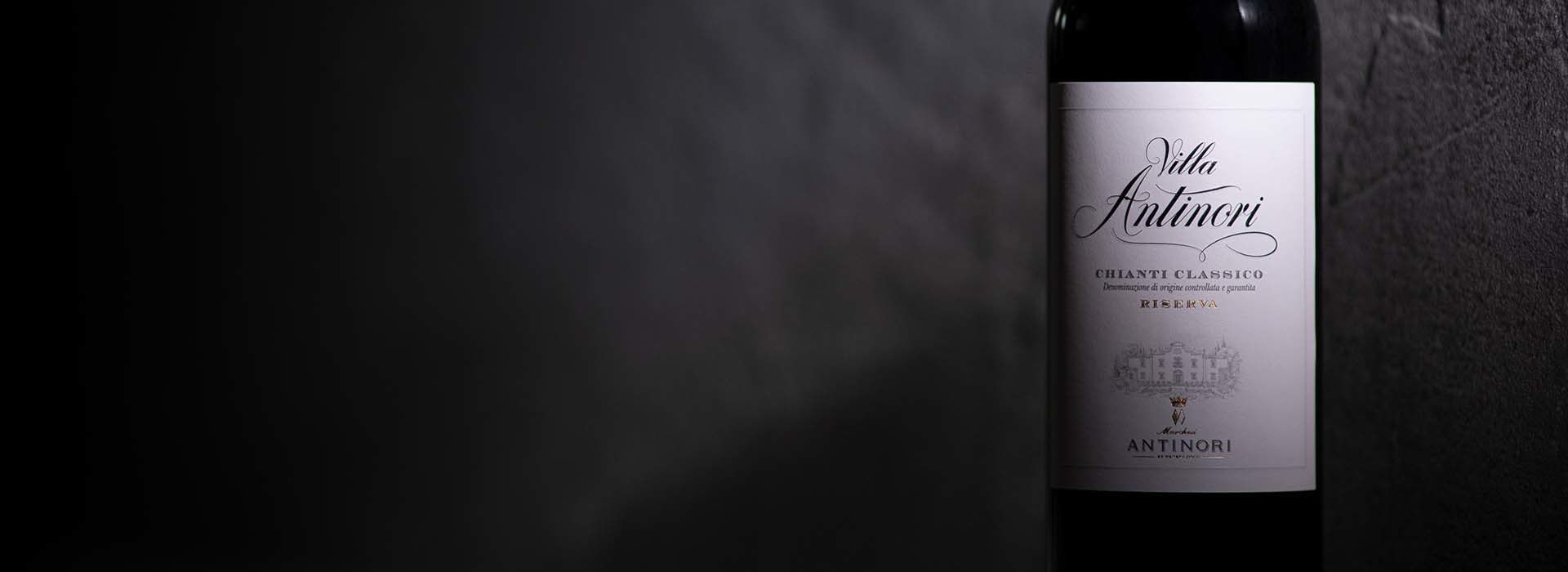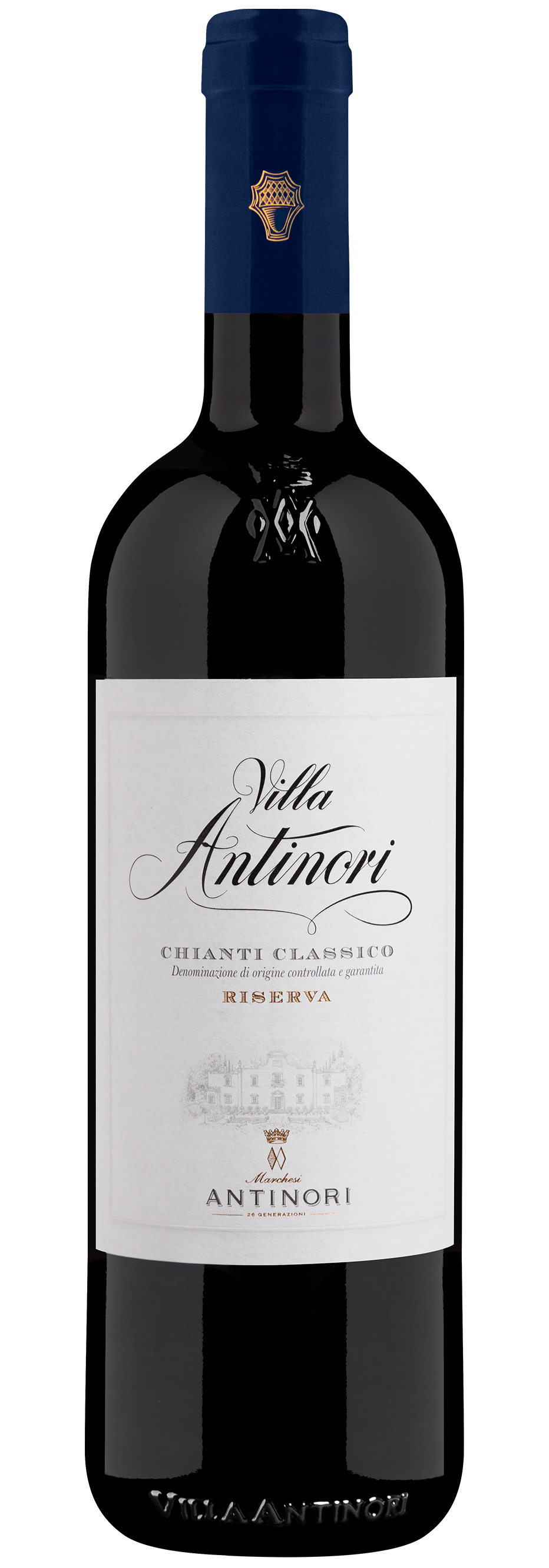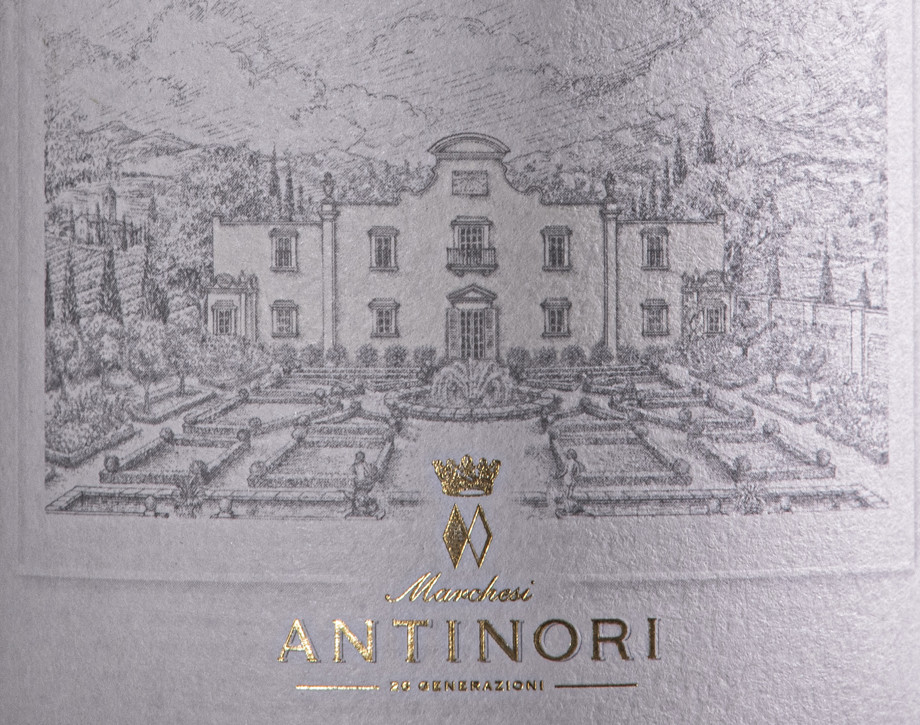Villa Antinori Chianti Classico Riserva

Climate
After a mild and dry autumn, the winter of 2012 in Chianti Classico was characterized by cold temperatures and normal rainfall, above all in the months of January and February. During the first half of February, in particular, temperatures dropped and snow fell without, however, damaging the vines. Spring began with rather cool and dry weather, causing a slight delay in bud burst and flowering compared to previous years. The months of April and May were marked by ample precipitation, a fundamental factor in enabling the vines to confront the lengthy rainless period which began in June and lasted all the way to the end of August, conditioning the development of vines both in terms of the growth of the canopy and the size and weight of the berries. The rain which fell during the very last days of August brought the vineyard back into balance, assisting the different grape varieties to proceed with regularity towards fully ripening, while the months of September and October, both mild in their temperatures and with normal rainfall, enabled the grapes to ripen properly both in terms of the accumulation of sugars and the physiological maturity of the skins. The harvesting of the grapes was concentrated in the period between September 20th and early October.
Vinification
The grapes were destemmed and given a soft pressing. The fermentation went at a fast pace, very helpful in achieving clean and focused aromas; the period of skin contact lasted approximately twelve days and was marked by extraction techniques aimed at maximum color and suppleness of tannins. Fermentation temperatures were held to a maximum of 86° Fahrenheit (30° centigrade). The blend created after the malolactic fermentation was aged in oak until the spring of 2014, using recipients of various sizes: 60% casks and 40% barrels (the new barrels coopered from Hungarian oak, the barrels used two or three times previously from French oak). The Villa Antinori Rosso Chianti Classico Riserva 2012 was bottled in the Antinori Chianti Classico cellars in Bargino in July of 2014.
Historical Data
Villa Antinori is, first and foremost, an idea, a way of conceiving the production of wine: on the one hand, experimentation and evolution, on the other hand, continuity in tradition. Sangiovese and other complementary grape varieties render their homage to an historic label and a wine with a long tradition,: this name, in fact, is almost one hundred years old, as the wine was produced for the first time in the 1928 vintage. With the inauguration of the Antinori Chianti Classico cellars, the family wished to reinterpret a Tuscan classic with a Riserva offering which is both delicate and, at the same time, elegant and decisive in flavor.
Tasting Notes
The Villa Rosso Chianti Classico Riserva is an intense ruby red in color. The nose shows notes of red berry fruit, particularly red currants and raspberries, which blend with aromas of cherries. Light oak notes fuse with spicy sensations, cinnamon and candied fruit. The flavors are balanced, with the light and tonic acidity typical of the Sangiovese grape and silky and vibrant tannins which give additional pleasure on the finish. Fruity and lightly oaky sensation linger on the aftertaste.
Awards
Wine Enthusiast 91/100 USA James Suckling 92/100 USA Antonio Galloni 90/100 USA Wine Advocate 90/100 USA Wine Spectator 90/100 USA Gambero Rosso Guide 2 Bicchieri Italy I Vini di Veronelli Guide Trifoglio Rosso Italy

The Wine
Villa Antinori Chianti Classico Riserva is a blend of Sangiovese together with other complementary varieties produced as a tribute to Antinori’s historic label that has accompanied the family’s winemaking traditions over the years. The inauguration of the new winery Antinori nel Chianti Classico inspired the family to reinterpret this Tuscan classic into a premium quality wine with unmistakable style, the resulting Riserva is delicate, decisive and elegant.

Climate
After a mild and dry autumn, the winter of 2012 in Chianti Classico was characterized by cold temperatures and normal rainfall, above all in the months of January and February. During the first half of February, in particular, temperatures dropped and snow fell without, however, damaging the vines. Spring began with rather cool and dry weather, causing a slight delay in bud burst and flowering compared to previous years. The months of April and May were marked by ample precipitation, a fundamental factor in enabling the vines to confront the lengthy rainless period which began in June and lasted all the way to the end of August, conditioning the development of vines both in terms of the growth of the canopy and the size and weight of the berries. The rain which fell during the very last days of August brought the vineyard back into balance, assisting the different grape varieties to proceed with regularity towards fully ripening, while the months of September and October, both mild in their temperatures and with normal rainfall, enabled the grapes to ripen properly both in terms of the accumulation of sugars and the physiological maturity of the skins. The harvesting of the grapes was concentrated in the period between September 20th and early October.
Vinification
The grapes were destemmed and given a soft pressing. The fermentation went at a fast pace, very helpful in achieving clean and focused aromas; the period of skin contact lasted approximately twelve days and was marked by extraction techniques aimed at maximum color and suppleness of tannins. Fermentation temperatures were held to a maximum of 86° Fahrenheit (30° centigrade). The blend created after the malolactic fermentation was aged in oak until the spring of 2014, using recipients of various sizes: 60% casks and 40% barrels (the new barrels coopered from Hungarian oak, the barrels used two or three times previously from French oak). The Villa Antinori Rosso Chianti Classico Riserva 2012 was bottled in the Antinori Chianti Classico cellars in Bargino in July of 2014.
Historical Data
Villa Antinori is, first and foremost, an idea, a way of conceiving the production of wine: on the one hand, experimentation and evolution, on the other hand, continuity in tradition. Sangiovese and other complementary grape varieties render their homage to an historic label and a wine with a long tradition,: this name, in fact, is almost one hundred years old, as the wine was produced for the first time in the 1928 vintage. With the inauguration of the Antinori Chianti Classico cellars, the family wished to reinterpret a Tuscan classic with a Riserva offering which is both delicate and, at the same time, elegant and decisive in flavor.
Tasting Notes
The Villa Rosso Chianti Classico Riserva is an intense ruby red in color. The nose shows notes of red berry fruit, particularly red currants and raspberries, which blend with aromas of cherries. Light oak notes fuse with spicy sensations, cinnamon and candied fruit. The flavors are balanced, with the light and tonic acidity typical of the Sangiovese grape and silky and vibrant tannins which give additional pleasure on the finish. Fruity and lightly oaky sensation linger on the aftertaste.
Awards
Wine Enthusiast 91/100 USA James Suckling 92/100 USA Antonio Galloni 90/100 USA Wine Advocate 90/100 USA Wine Spectator 90/100 USA Gambero Rosso Guide 2 Bicchieri Italy I Vini di Veronelli Guide Trifoglio Rosso Italy

Villa Antinori
Villa Antinori is an important corner stone as its name is associated with over 100 years of history. At the same time it represents ongoing progress. The one essential principle is continuous research for increasingly higher quality standards. This idea produced two different wines that share a common passion for quality: Villa Antinori Rosso and Villa Antinori Bianco. Villa Antinori was originally produced in 1928 by Marchese Niccolò Antinori as a Chianti Classico that could age and that would improve over time. Soon after, Villa Antinori was found in the most prestigious cellars in embassies, royal houses, important hotels and restaurants. In 1931, Villa Antinori Bianco was made from traditional Trebbiano grapes. In the 1980’s a small percentage of Chardonnay was added in order to give the wine better structure.


















